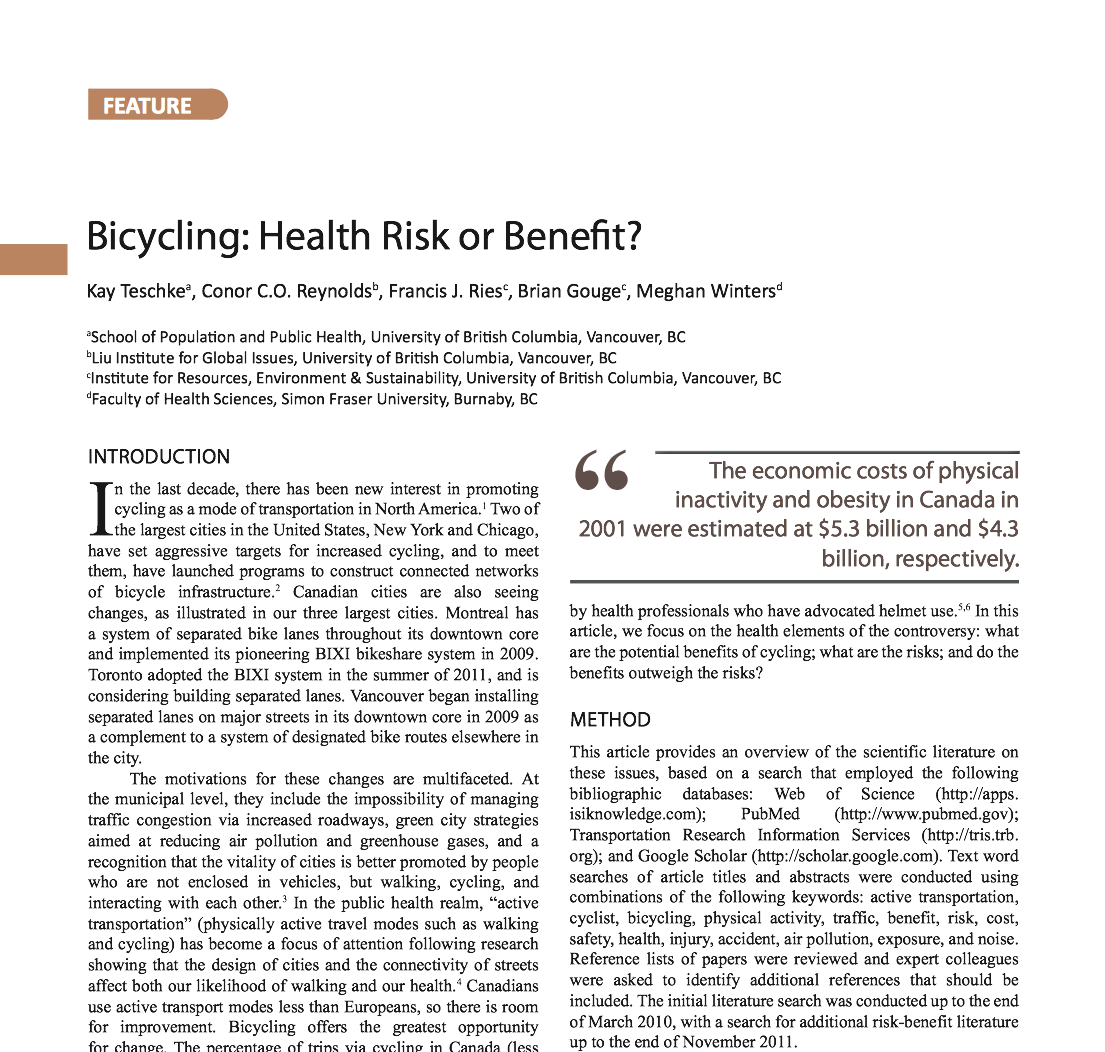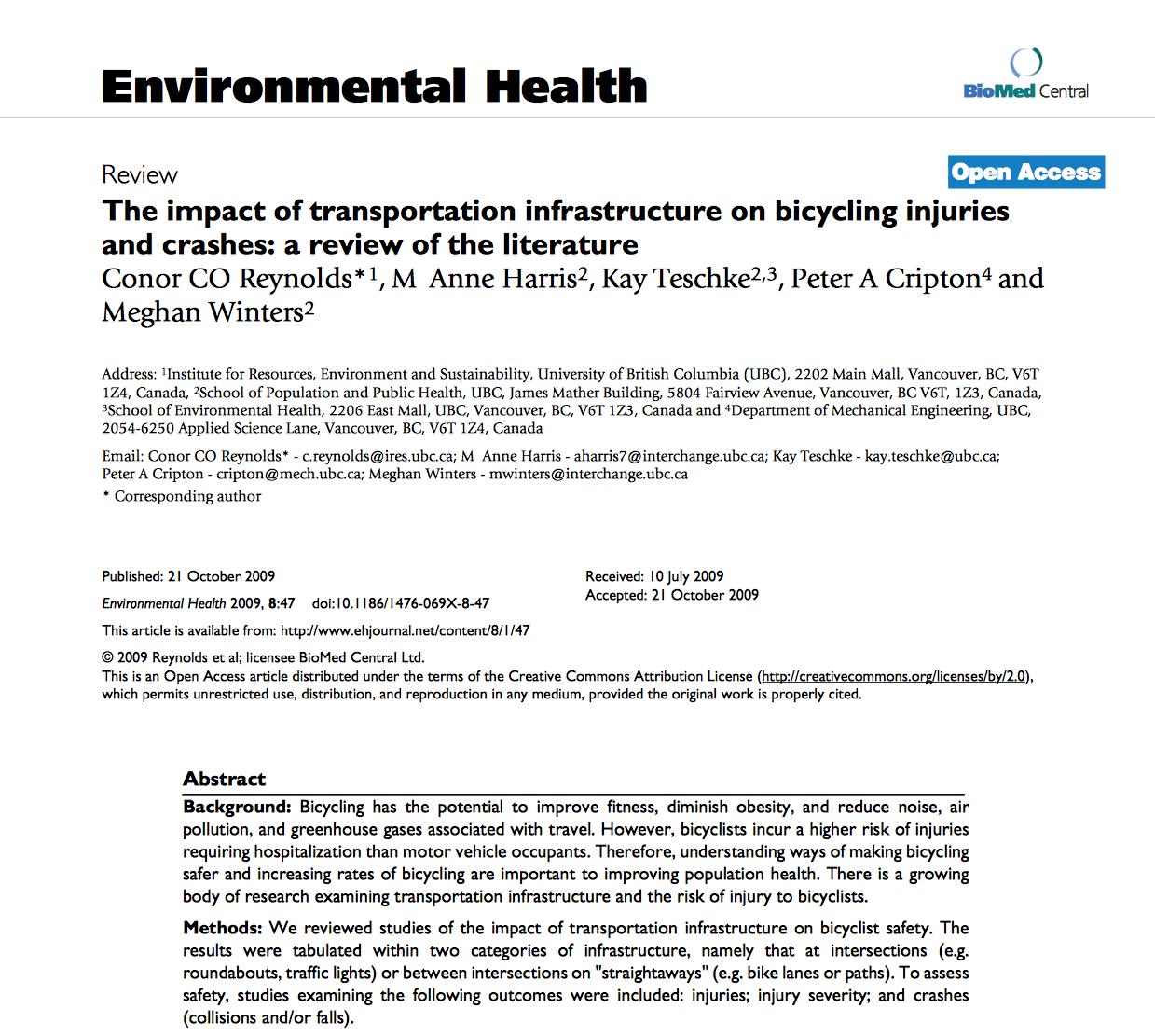Benefits of cycling
We were asked to write a feature article in the UBC Medical Journal (March 2012) on the health risks and benefits of cycling.
We included updated information about fatalities by different transportation modes in Canada in 2009, including deaths of 1605 car drivers and passengers, 307 pedestrians, and 41 bicyclists. We found that the numbers of fatalities for all transportation modes has been declining steadily over the the last 2 decades. Despite this, our research shows that safety concerns remain one of the biggest deterrents of cycling.
However, any risk of cycling needs to be balanced against its benefits. In 2009, the World Health Organization estimated that physical inactivity is responsible for the following global disease burdens: 27% of diabetes, 30% of ischaemic heart disease, and 21 to 25% of breast and colon cancers. Cycling is a great way to increase and maintain physical activity, and is associated with reduced risks of heart disease and all-cause mortality. Studies that have calculated benefit to risk ratios have concluded that there is a large net health benefit of increased cycling, since the risk of fatal injury is greatly outweighed by the reductions in mortality afforded by increased physical activity. Estimated benefit to risk ratios ranged between 9 to 1 and 96 to 1.
Cycling injuries & transportation infrastructure
We reviewed the scientific literature (to 2009) about bicyclists’ injuries or crashes and the transportation infrastructure. The evidence to date suggests that purpose-built bicycle-only facilities (e.g. bike routes, bike lanes, bike paths, cycle tracks at roundabouts) reduce the risk of crashes and injuries compared to cycling on-road with traffic or off-road with pedestrians. Street lighting, paved surfaces, and gentle grades are additional factors that appear to improve cyclist safety.
Still, these studies did not provide detailed guidance about which cycling route designs would be safest, in part because the infrastructure was characterized in broad categories, grouping route types that might have different risks (e.g., paved and unpaved off-street paths), and did not take into account multiple infrastructure features. The issues identified in this review helped to shape the design of our injury study to overcome limitations of previous studies.
Links to the full review and a summary.
Risks & benefits of active transportation
In 2010, we were asked by the National Collaborating Centre for Environmental Health to review the scientific literature about the risks and benefits of walking and bicycling.
Individual benefits include increased physical fitness, less obesity, and reduced risk of cardiovascular disease. Societal benefits include reduced emissions of air pollutants and greenhouse gases, reduced traffic noise, and more liveable neighbourhoods with less motor-vehicle traffic. These outweigh the potential risks of walking and biking: injuries from crashes and exposure to air pollution.
Link to the review.




